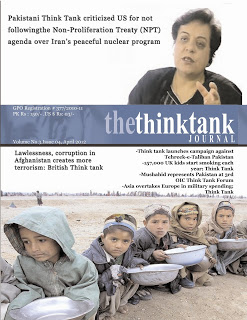In a landmark initiative, Pakistan has taken decisive steps to tackle the gender pay gap, a critical barrier to inclusive economic growth. The recently launched Pakistan Gender Pay Gap Report, a collaborative effort between the Ministry of Overseas Pakistanis and Human Resource Development (MOPHRD) and the International Labour Organization (ILO), highlights the disparities in earnings between men and women and proposes actionable solutions.
Key Findings of the Gender Pay Gap Report
The Pakistan Gender Pay Gap Report reveals stark disparities in earnings, with women in wage employment earning 25–30% less than men, depending on the wage metric. In the informal economy, this gap widens to 40%, driven by limited enforcement of labour laws and inadequate protections. Key drivers of the gap include:
Occupational Segregation: Women are often confined to low-paying roles due to societal norms and structural barriers.
Informal Work: A significant portion of women work in unregulated, informal sectors with minimal wage protections.
Discriminatory Practices: Systemic biases in hiring, promotions, and wage-setting persist.
Unexplained Factors: A substantial portion of the pay gap cannot be attributed to measurable factors like education or skills, pointing to deep-rooted inequalities.
While Pakistan has reduced the gender pay gap from 33% in 2018, it still lags behind regional peers, underscoring the need for urgent action.
The National Action Plan: A Roadmap for Change
The national workshop, attended by policymakers, employers, workers’ representatives, labour inspectors, and academics, culminated in a National Action Plan to address the gender pay gap. The plan outlines short, medium, and long-term objectives, including:
Aligning Legislation with ILO Standards: The report emphasizes compliance with the ILO’s Equal Remuneration Convention, 1951 (No. 100) and Convention 111 on Discrimination (1958) to ensure equal pay for work of equal value.
Formalizing Informal Work: Supporting women’s transition to formal employment through skills certification and regulated supply chains.
Promoting Career Progression: Linking jobs to upskilling opportunities and career advancement for women.
Valuing Care Work: Recognizing and fairly compensating women’s contributions in care sectors.
Flexible Work Arrangements: Introducing policies to accommodate women’s care responsibilities, enabling greater workforce participation.
Stakeholder Commitment and Insights
The workshop featured key voices from government, ILO, and civil society, reinforcing Pakistan’s commitment to gender equity. Nadeem Aslam Chaudhry, Federal Secretary of MOPHRD, emphasized, “This report and action plan mark a critical step towards unpacking the barriers that hold women back in the economy.” He highlighted Pakistan’s obligations under ILO conventions as a driving force for reform.
Geir Tonstol, ILO Country Director for Pakistan, described the workshop as a “pivotal step forward” in moving from diagnosis to actionable solutions. He stressed the importance of transparent wage-setting systems and formalizing informal work to create opportunities for women across sectors.
Xavier Estupinan, Wage Specialist at ILO’s Regional Office for Asia and the Pacific, pointed to the “sticky floor” effect, where women remain trapped in low-paid, low-mobility jobs, particularly in the informal economy. He advocated for robust wage-setting mechanisms and social dialogue to address this issue.
Emanuela Pozzan, Senior Specialist in Gender Equality at ILO Headquarters, shared global best practices and pledged support from the Equal Pay International Coalition (EPIC) to help Pakistan achieve wage equity.
Why Closing the Gender Pay Gap Matters
Closing the gender pay gap is not just a matter of fairness—it’s an economic imperative. Increasing women’s labour force participation can drive inclusive economic growth, boost productivity, and reduce poverty. By addressing structural barriers, such as occupational segregation and lack of formal protections, Pakistan can unlock the full potential of its female workforce.
The report’s findings also highlight the societal benefits of wage equity, including improved living standards for families, greater financial independence for women, and enhanced social justice in the workplace.
Practical Steps for Implementation
The National Action Plan proposes a multi-pronged approach to reduce the gender pay gap:
Policy Reforms: Strengthen labour laws to ensure compliance with ILO standards and enforce equal pay regulations.
Skills Development: Certify and recognize women’s skills to facilitate their transition to higher-paying, formal roles.
Workplace Flexibility: Introduce flexible work arrangements to support women balancing work and care responsibilities.
Social Dialogue: Foster collaboration between government, employers, and workers’ organizations to address systemic inequalities.
Public Awareness: Raise awareness about the value of women’s economic contributions, particularly in undervalued sectors like care work.
The launch of Pakistan’s Gender Pay Gap Report and the accompanying National Action Plan marks a significant milestone in the country’s journey toward gender equity. By addressing the root causes of wage disparities—such as occupational segregation, informal work, and systemic biases—Pakistan can create a more inclusive and equitable labour market. With the support of the ILO and the commitment of stakeholders, the nation is well-positioned to translate these recommendations into meaningful change, paving the way for a fairer and more prosperous future.



